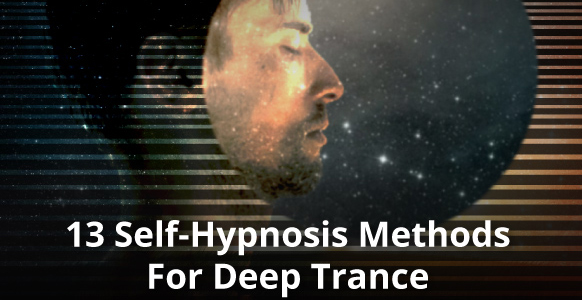
When it comes to inducing a deep, self-hypnotic trance, a common misconception is that there is a magical, fool-proof method.
There is not.
The secret sauce is actually much more localized, specific to each individual’s practice.
If you haven’t guessed, it all boils down to you.
To what your mindset is, and your willingness to persevere if you hit a brick wall.
One reason many people fail at self-hypnosis is because they tend to focus on the method first, and when this doesn’t work, there is a strong temptation to give up and let out an exasperated exhale.
Needless to say, this is not a very effective approach. Which is exactly why we encourage the opposite.
In order to master self-hypnosis, you need to first focus on mastering yourself, and only then use an induction method to get you into a trance.
A little like how if you’re a hypnotist, you need to set a positive intention (your H+) before putting a subject into trance.
If you rock up to the session in a grumpy mood feeling distracted, no matter which techniques you use, they’re not going to work.
Your mood will rub off on your subject. If you have trouble going into a trance first (going first), and setting the tone you want your subject to experience, how do expect them to reach the desired state?
The same is true when you practice self-hypnosis. You need to set your mental state first, and only then use your desired induction method.
How To Set The Right Mental State For Self-Hypnosis
Having a go-to induction method can be useful as it helps your brain get into sync and quickly get down to business.But of course, no two days are the same. What works for you one day may be less powerful on another, depending on your state of mind.
So mixing things up by using different techniques can be a useful way to keep the conscious mind stimulated and focused before you sink into a deep trance.
But before starting with an induction method, it is important to remind yourself of why you want to get into a trance.
The reason self-hypnosis is so powerful is because of how it gives you the ability to gain access to the unconscious, which is why it’s a fantastic tool for tapping into creativity, abundant mindsets, problem solving – among many other things.
So having a clear idea in advance of what you want to achieve during self-hypnosis will set you off on the right foot.
However, it is the gaining access to your unconscious that often poses the greatest challenge. If you’re having trouble inducing yourself into a hypnotic state, do not get frustrated.
What may appear to be a problem is a learning opportunity for improving your ability to go under.
Continue reading, to know how to overcome the obstacles while inducing yourself into a hypnotic state. Read on to know the interesting tips about self hypnosis and the ultimate hypnosis technique to go into deep trance



